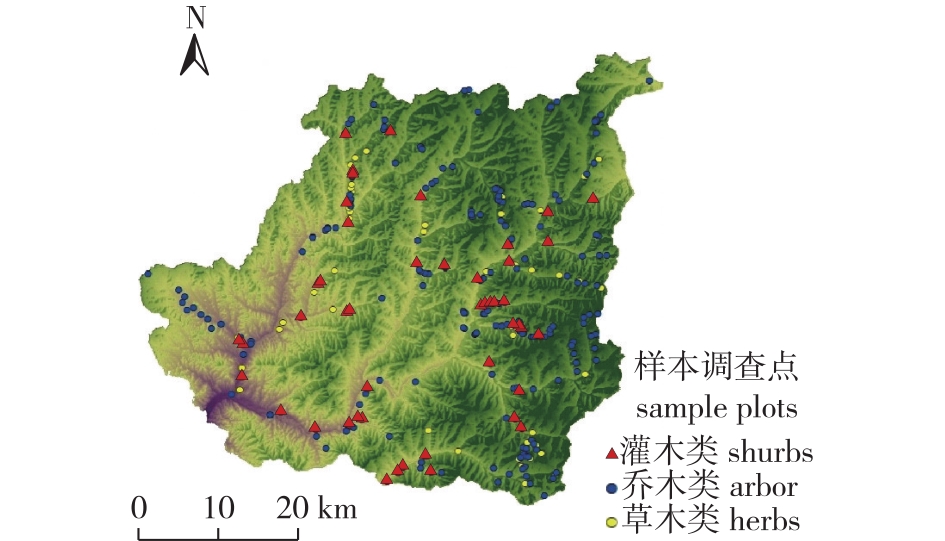 PDF(1789 KB)
PDF(1789 KB)


Analysis of the physicochemical properties and flammability of the plant leaves of typical plants in Chongli District of Zhangjiakou City, Hebei Province
MU Yunjie, GAO Demin, LONG Tengteng, GUO Zaijun, NIU Haifeng
Journal of Nanjing Forestry University (Natural Sciences Edition) ›› 2024, Vol. 48 ›› Issue (6) : 239-244.
 PDF(1789 KB)
PDF(1789 KB)
 PDF(1789 KB)
PDF(1789 KB)
Analysis of the physicochemical properties and flammability of the plant leaves of typical plants in Chongli District of Zhangjiakou City, Hebei Province
【Objective】This study analyzed the physicochemical and combustion characteristics of the leaves of eight typical plants in Chongli District of Zhangjiakou City, Hebei Province, the study aimed to provide insights for assessing the risk of local forest fires and their sustainable management.【Method】Based on the distribution patterns of the typical land surface types and natural conditions in Chongli District of Zhangjiakou City, eight plant species, including Betula platyphylla, Pinus tabuliformis, Larix gmelinii, Corylus heterophylla, shrubs, herbs, Prunus sibirica, and P. sylvestris var. mongolica were selected as the research objects. Leaves were collected from pure forest segments with high vegetation coverage, and their physicochemical properties were determined. The combustion characteristics of the leaves of these eight plant species were determined by principal component analysis. The leaves were additionally categorized based on their combustion levels by cluster analysis.【Result】The combustion intensity of the leaves ranged from strongest to weakest in the following order: P. sylvestris var. mongolica, B. platyphylla, herbs, P. sibirica, C. heterophylla, P. tabuliformis, L. gmelinii, and shrubs. The leaves were classified into three categories by principal component analysis and cluster analysis, namely, the highly combustible, moderately combustible, and most easily combustible groups. The highly combustible category included L. gmelinii, P. tabuliformis, and scrub plants. The moderately combustible category comprised B. platyphylla, C. heterophylla, herbs, and P. sibirica, while the most easily combustible category included P. sylvestris var. mongolica.【Conclusion】 L. gmelinii, P. tabuliformis, and shrub plants exhibited the lowest combustion propensity, thus posing as minimal wildfire hazards. Conversely, the combustion propensity of P. sylvestris var. mongolica was highest, indicating an elevated risk of wildfires. Therefore, targeted attention and preventive measures are imperative for controlling wildfires in Chongli District. The findings provide crucial evidence for predicting forest fires in Chongli District of Zhangjiakou City, and advocates the implementation of measures such as biological fire prevention and controlled burning during forestry operation.

plant leaves / physicochemical properties / combustion characteristics / forest fire risk / cluster analysis / principal component analysis / Chongli District, Zhangjiakou City
| [1] |
|
| [2] |
|
| [3] |
|
| [4] |
袁有宏. 森林防火的重要性及技术措施探析[J]. 现代农业科技, 2019(3):134,139.
|
| [5] |
王秋华. 森林火灾燃烧过程中的火行为研究[D]. 北京: 中国林业科学研究院, 2010.
|
| [6] |
|
| [7] |
DE MAGALHÃES R M Q,
|
| [8] |
刘家豪, 辛颖, 薛伟, 等. 基于热重分析的帽儿山地区6种乔木燃烧性研究[J]. 森林工程, 2023, 39 (1): 54-62.
|
| [9] |
王昆伦, 蒋婷, 侯小菲, 等. 昆明地区17种园林竹鲜叶的燃烧性[J]. 浙江农林大学学报, 2020, 37(5):963-970.
|
| [10] |
张运生, 舒立福, 闫想想, 等. 广西4种乔木树叶的燃烧性差异研究[J]. 南京林业大学学报(自然科学版), 2021, 45(4):195-200.
|
| [11] |
苏文静, 张思玉, 何诚, 等. 昆明地区9种藤本植物活叶片的燃烧性[J]. 林业资源管理, 2017(6):120-123.
|
| [12] |
盛东晨, 徐家琛, 王雷. 呼和浩特市16种园林草本植物的燃烧性研究[J]. 山西农业大学学报(自然科学版), 2021, 41(3):88-99.
|
| [13] |
张德顺, 吴雪, 陈陆琪瑶, 等. 上海市常见26种园林树种燃烧性评价[J]. 同济大学学报(自然科学版), 2021, 49(10):1399-1406.
|
| [14] |
|
| [15] |
鲁绍伟, 余新晓, 刘凤芹, 等. 北京八达岭林场森林燃烧性及防火措施研究[J]. 北京林业大学学报, 2006, 28(3):109-114.
|
| [16] |
王昆伦, 侯小菲, 蒋婷, 等. 昆明地区12种园林绿化树种鲜叶燃烧性比较[J]. 林业资源管理, 2019(6):97-100,107.
|
| [17] |
李国辉, 张桥蓉, 马瑞杰, 等. 施肥对滇中地区4种主要易燃树种叶燃烧性的影响[J]. 森林工程, 2022, 38 (4): 18-25.
|
| [18] |
李连强, 牛树奎, 陶长森, 等. 妙峰山油松林分结构与地表潜在火行为相关性分析[J]. 北京林业大学学报, 2019, 41(1):73-81.
|
| [19] |
|
| [20] |
宋叙言, 沈江. 基于主成分分析和集对分析的生态工业园区生态绩效评价研究:以山东省生态工业园区为例[J]. 资源科学, 2015, 37(3):546-554.
|
| [21] |
陶长森, 牛树奎, 陈羚, 等. 妙峰山林场主要针叶林冠层特征及潜在火行为[J]. 北京林业大学学报, 2018, 40(5):82-89.
|
| [22] |
梁瀛, 张思玉, 努尔古丽, 等. 天山中部林区主要树种理化性质及燃烧性分析[J]. 林业科学, 2011, 47(12):101-105.
|
| [23] |
张今奇, 周梅, 赵鹏武, 等. 内蒙古大兴安岭东麓5种典型树种燃烧性[J]. 温带林业研究, 2021, 4(1):27-33.
|
| [24] |
魏建珩, 赵恒, 高仲亮, 等. 毛乌素沙地主要树种燃烧性研究[J]. 消防科学与技术, 2021, 40(11):1676-1681.
|
| [25] |
李国辉, 张桥蓉, 王昆伦, 等. 土壤有效磷含量对滇中地区主要森林木本植物枝叶燃烧性的影响[J]. 西部林业科学, 2021, 50(6):76-82.
|
| [26] |
苗庆林, 田晓瑞. 多气候情景下大兴安岭森林燃烧性评估[J]. 林业科学, 2016, 52(10):109-116.
|
| [27] |
|
| [28] |
|
| [29] |
张传波, 李卫国, 王晶, 等. 波段反射率和植被指数结合的作物生长季农田土壤水分估测[J]. 江苏农业学报, 2022, 38(1):111-118.
|
/
| 〈 |
|
〉 |